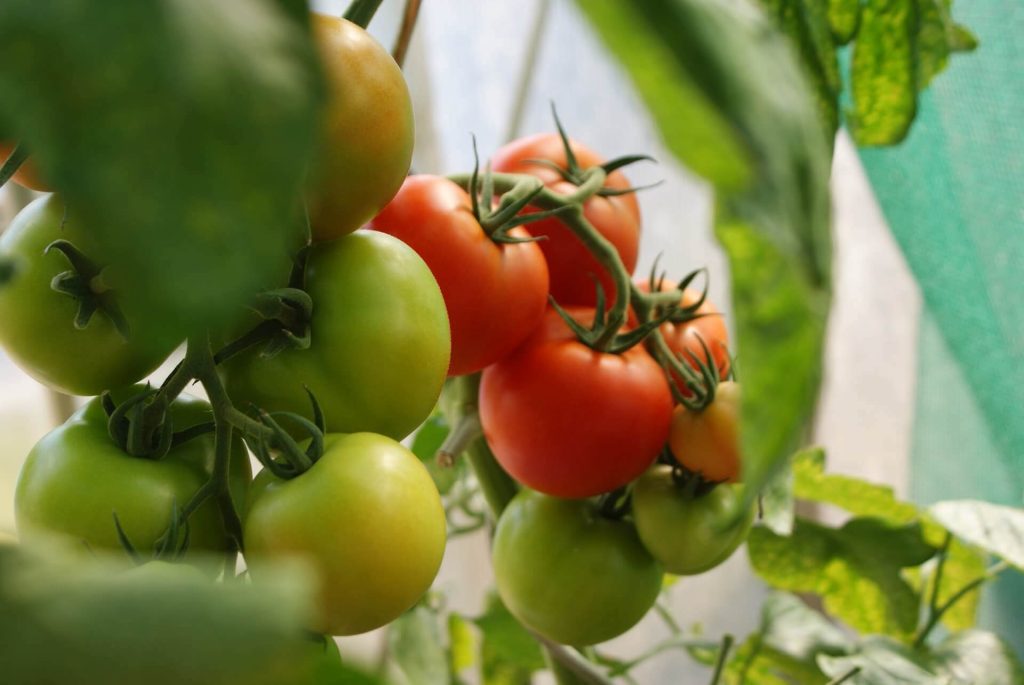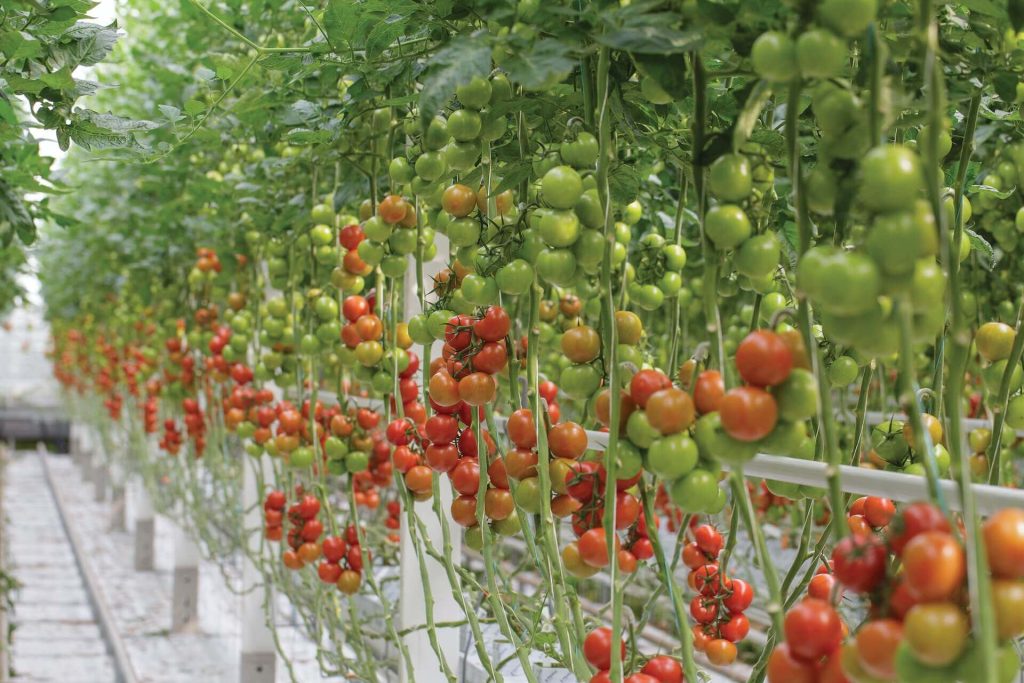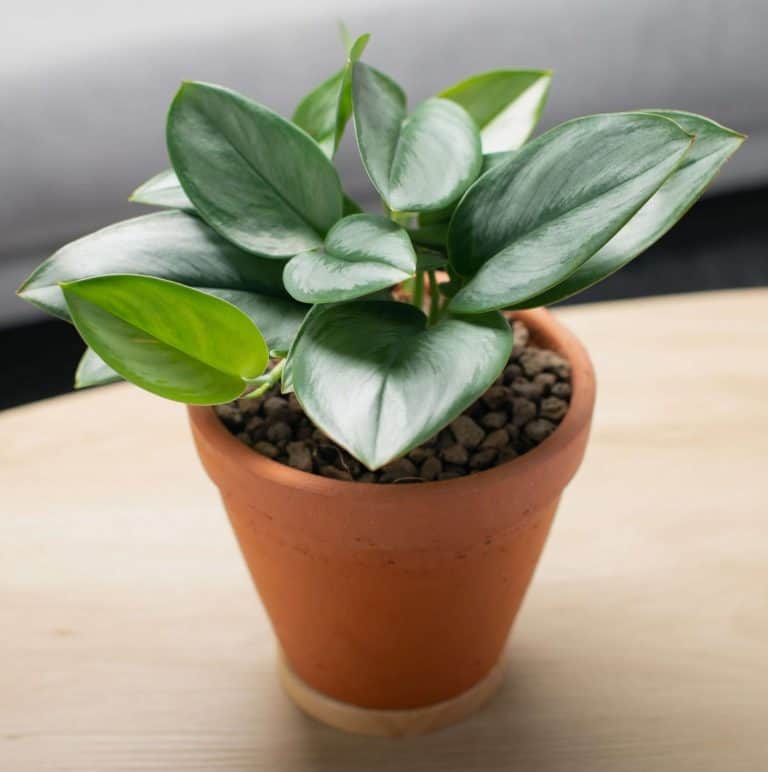Tomato Plants Over Winter: How To Help Them THRIVE! [2023]
Some of you who follow me on my social channels will know that I take a lot of pride in my garden, but growing tomato plants over winter throws a spanner in the works as it means I can’t enjoy this beautiful fruit (or is it a vegetable?) all year round.
If you’re in the same boat as me and dream of dreamy tomatoes on toast all year round, don’t worry, I’m here to tell you that you can have a plentiful crop all year round, including winter.
So join me as I take you through your ultimate guide to growing tomato plants over winter.
Your Ultimate Guide To Growing Tomato Plants Over Winter
- What To Do With Tomato Plants In Winter
- Overwintering Tomato Plants And Why
- How To Overwinter A Tomato Plant
- Overwintering Indoors
- Overwintering In A Glasshouse
- Overwintering Tomato Cuttings
- Growing Tomato Plants Outside In Winter
- Protecting Your Outdoor Tomato Plants During Cold Weather
- How Long Do Tomato Plants Live
- Can You Keep A Tomato Plant Alive All Year
Affiliate Link Disclosure
This post may contain affiliate links, meaning I get a commission if you decide to make a purchase through my links, at no extra cost to you.
Related Posts
- How To Grow Tomatoes Indoors Like A Pro! 2022
- How To Grow Tomatoes In A Polytunnel-The Right Way in 2022!
- How To Grow Tomatoes Indoors With Lights + Growing Tips! [2023]
- Can You Grow Tomatoes In A Grow Tent? + Tips For Quick Growth [2022]
What To Do With Tomato Plants In Winter
Tomatoes are perennial in their native environment. This means that they’re made to grow all through the year and can be cold tolerant – so you don’t have to plant new crops yearly.
But, this perennial growing ability only really applies to wild tomato plants.
When it comes to cultivated tomato varieties, which are the ones you’d buy for your balcony garden – these tend to be heat dependent, grow vertically, and are very sensitive to the cold.
You may think you should just get a native tomato plant, right?
Unless you’re planning to travel to somewhere in South America, and forage in the bushes, learning to grow tomato plants in winter is probably easier.
Temperatures below 10°C can harm tomato plants. The way to spot if your plant is dying is that the leaves turn purple and start to die.
So if you’re somewhere where the temperatures drop far below zero, you will want to move your plants into a temperature-controlled location that is bright and warm.
This is why people in colder climates tend to plant new crops yearly so that their plants aren’t subject to the end-of-season tomato diseases that show their faces in October and November.
Despite all this, the best thing to do with tomato plants over winter is to keep them healthy and well-nourished. These plants can be successfully overwintered, and we’re here to tell you how.
Overwintering Tomato Plants And Why
You need to learn how to overwinter your tomato plants if you want some winter tomatoes. Overwintering tomatoes means growing these plants over winter. You can do this by increasing your tomatoes indoors or in a greenhouse.
By seeding a new batch of tomatoes every two weeks, starting before the first frost of winter, you’ll have fresh tomatoes all winter. No more waiting till summer for that fresh Caprese salad!

How To Overwinter A Tomato Plant
1. Create Favorable Soil Conditions
You must first set up an indoor space to protect your tomato plants from harsh winter temperatures. Part of this means maintaining the same soil conditions that your plants would have outside during summer.
Yes, you’ll have to find ways to keep your soil warm.
Try using some black biodegradable sheet mulch on top of your soil. The mulch absorbs the heat from the winter sun and can keep your soil warm without paying high energy bills.
2. Choose A Well-lit And Warm Area
Tomatoes love the sun, so you must move your plants to the brightest and sunniest part of your house. If your home doesn’t have much natural light, you’ll have to consider using artificial light like UV lamps.
Another thing to consider is where the light is coming in from. If it’s just one window, rotating your plants occasionally will mean that each side of your plants will be exposed to sunlight.
Warmth is another thing that tomato plants love, so you’ll want to ensure temperatures are above 18°C. This is the happiest place for your tomato plants, so keeping a consistent light and warmth schedule is how your plants will thrive.
3. Get The Timings Right
Can tomato plants survive winter indoors? Well, yes, of course! It’s all about getting the right conditions, and timing is everything.
You’ll need to keep an eye on what the weather is doing – especially with climate change, and temperatures tend to change drastically quickly.
For your tomato plants to survive, you need to move them inside as soon as summer ends. Ideally, this is 4 weeks before the first frost lands on the ground.
The other thing you’ll need to do is to grow your tomatoes in batches. Planting new plants every two weeks will ensure you have some fresh juicy tomatoes all year.
This may sound like a lot of work, so you will need to commit if tomatoes over winter are what you want.
4. Have A Mechanism For Aiding Pollination
Keeping tomato plants over winter, especially indoors will mean you will miss out on nature’s natural pollinators, for example, bees.
Pollinating is a vital step in growing plants, and since your plants will be indoors, you will need to manufacture a way to foster this pollination process.
An easy way to do it is to shake the plants gently by hand when the flowers are in full bloom. Another way to do it is to carry pollen from one flower to the next or even direct a fan toward your tomato plants.
5. Select The Best Variety Of Tomatoes
If you cannot book that flight to South America, you need to choose a tomato plant variety that does well indoors and in pots to boost your chances of getting a bountiful crop.
Head to your local plant store and read the labels on the plants. What you’re looking for are small upright varieties.
Some varieties to keep an eye for include:
- Red Robin
- Tiny Tim
- Florida Petite
- Toy Boy

6. Use The Right Containers
Keeping tomato plants over winter and indoors will most definitely mean you’ll be growing your plants in a contained space – like a pot. Make sure that your pot is big enough to hold a mature plant.
You need to consider how big your tomato plant will grow upwards and buy a pot that will fit it as it grows instead of choosing one that fits the plant you buy at the start.
This is because you need to give your plant the chance to grow a good root structure and to do this, space is needed.
The next thing to consider is whether your pot is breathable and has adequate drainage. Choose an unglazed pot and one that has drainage holes on the bottom to let any excess water out.
Make sure you have a tray at the bottom to collect the excess water. If your soil is too wet, this is a breeding ground for fungus gnats, which you don’t want inside your home.
7. Water Your Tomato Plants Adequately
If you’re expecting your tomato plant to be low maintenance, I am here to tell you they are not. You will need to schedule into your calendar when to water your plant. Every day will be too much, but once a week may be too little.
I recommend getting a moisture meter, which will tell you when the soil is dry and your cue to water it. This has been a game changer for me in keeping my plants alive because it ensures the plant has the essential moisture needed to thrive.
8. Fertilize Your Tomato Plant
Like humans, tomato cuttings over winter need their vitamins. Tomato cuttings are the baby plants you start with that will grow into your plant, and two weeks after moving your cutting into a pot, you will need to fertilize it.
Fertilizer provides your tomato plants with the necessary vitamins and nutrients it needs to grow.
Every few weeks, you’ll need to mix some fertilizer into your plant’s soil. A slow-release fertilizer means you can have more time between fertilizing as it slowly releases nutrients.
9. Plant The Tomatoes Deep Inside The Pot
We’ve talked about having a big pot to house your growing plant, but you also need to make sure your plant is deep enough so the whole plant can go deep into the soil.
This is vital when trying to understand the question, “can tomato plants survive winter”.
When planting your plant, add a few centimeters of nutrient-rich soil into the pot, add your plants, and top it up with the rest of the soil so that it covers the plant thoroughly.
Add a couple more centimeters over the top, and then add your mulch. You’ll be guaranteed a good starter environment for your tomato plants to flourish.
10. Have A Mechanism For Defending The Plant From Diseases
Just because your tomato plants are indoors doesn’t mean they’ll be immune from diseases. Tomato plants are already not made for cold conditions, so you want to ensure that you set them up for success by trying to keep diseases at bay.
If you want a quick way to protect your plant, dissolve an aspirin tablet in water and spray it over your plant. Another way to do it is to buy an organic plant spray that you use every few weeks, just like the fertilizer.
Overwintering Indoors
If you’re wondering what to do with potted tomato plants in winter, we’ve given you the 10 steps to overwintering your tomato plants indoors.
To summarise:
1. Create favorable soil conditions
2. Choose a well-lit and warm area
3. Get the timings right
4. Have a mechanism for aiding pollination
5. Select the best variety of tomato plants
6. Use the right containers
7. Water your tomato plants regularly
8. Fertilize your tomato plant
9. Plant the tomatoes deep inside a pot
10. Have a mechanism for defending the plant from diseases.
Overwintering In A Glasshouse
If you’re lucky enough to have the space to have a glasshouse (or greenhouse) on-site, you’ll be able to create the conditions needed for your tomato plants to thrive over winter without much trouble.
Glasshouses are made to be warm, and most use them for cultivating an environment to grow plants that naturally grow well in warmer climates.
This doesn’t mean that your plants will be completely immune from cold temperatures and frost.
Make sure that your glasshouse has some insulation to keep the warmth in, and you can even invest in an electric propagator with a heated bottom that will keep the roots of your plants from freezing.

Overwintering Tomato Cuttings
If you’re lucky enough to know someone with a flourishing tomato plant, ask them if you can get a cutting of it.
Tomato cuttings are better than seeds because:
1. Cuttings are less fiddly and more reliable
2. They establish faster than seeds
3. It’s easier to batch the tomatoes, so you get a steady harvest throughout the year.
The best thing is that tomato cuttings do better indoors than in a glasshouse or outdoors, so overwintering tomato cuttings is a really great way to get that crop of yours all year round.
Growing Tomato Plants Outside In Winter
Depending on where you live, you may be able to grow tomato plants outside in winter. This is in climates with warmer winters that don’t dip below 0 degrees and tend to be more wet and humid.
Protecting Your Outdoor Tomato Plants During Cold Weather
You can take a couple of steps to protect your outdoor tomato plants during cold weather.
1. Cover your tomatoes with a tarp or clear plastic covering at night.
2. Remove coverings in the morning.
3. Find a variety that’s cold-resistant or short-seasoned.
How Long Do Tomato Plants Live
The typical tomato plant will grow for one season, about 6-8 months when grown outdoors. Those grown indoors can survive longer (between 2-5 years) because they’re not subject to the same weather issues.
The healthier your tomato cuttings, the longer your plants will be able to live.
Can You Keep A Tomato Plant Alive All Year
Yes, you totally can. You can grow tomatoes indoors to keep them alive all year. Though the plants will be smaller and grow taller and less bushy than their outdoor counterparts, with the right conditions, you’ll be able to have fresh tomatoes all year round.
FAQs On Tomato Plants Over Winter
What Do You Do With Tomato Plants Over Winter
So, what do you do with tomato plants over winter? If you have outdoor tomato plants that you’d like to keep, cut about half of the plant back, to adjust it to the lower evaporation and light requirements of the darker, cooler winter season.
You can take some cuttings and grow them indoors over the winter so that once summer comes, your outdoor plants will be ready to go for another season.
Can Tomato Plants Be Saved Over Winter
Can tomato plants be saved over winter? Yes, tomato plants can be saved over winter. Before the frosts come in, you can bring tomatoes in at the end of summer before they freeze. This is overwintering tomatoes and the best way to save your plants over winter.
Will My Tomato Plant Come Back Next Year?
Asking yourself “will my tomato plant come back next year? If your tomato plants are outside, tomato plants do not regrow every year. The only options you have are to protect your plants over the winter and hope they survive the frost and come back in summer. Alternatively, grow them indoors following the steps on how to overwinter your tomato plants.

Is It Worth Overwintering Tomato Plants
Is it worth overwintering tomato plants? Although it involves a lot of work and commitment, it is worth it to overwinter tomato plants.
Tomatoes become very expensive over the winter months, so if you want to be able to throw some fresh tomatoes in your salads or sauces, the best way is to overwinter them in successive batches, so you have a new crop all year round.
Well, there you have it, your ultimate guide to growing tomato plants over winter. Overwintering tomato plants, particularly indoors may guarantee you a crop of tomatoes all year round. What a dream!
Though it does involve work and commitment, like making sure you have scheduled your waterings and selected a pot that will be big enough to house your plant, once you get the hang of it, you’ll be a tomato plant guru in no time.
Picking the right tomato variety at the start will also give you a head start to having tomato plants that are made to thrive over winter. Enjoy!











![Growing Kale Indoors Hydroponically: A Step By Step Guide [2023]](https://aboveandbeyondgardening.com/wp-content/uploads/2022/10/Growing-Kale-Indoors-Hydroponically-1-768x512.jpg)
